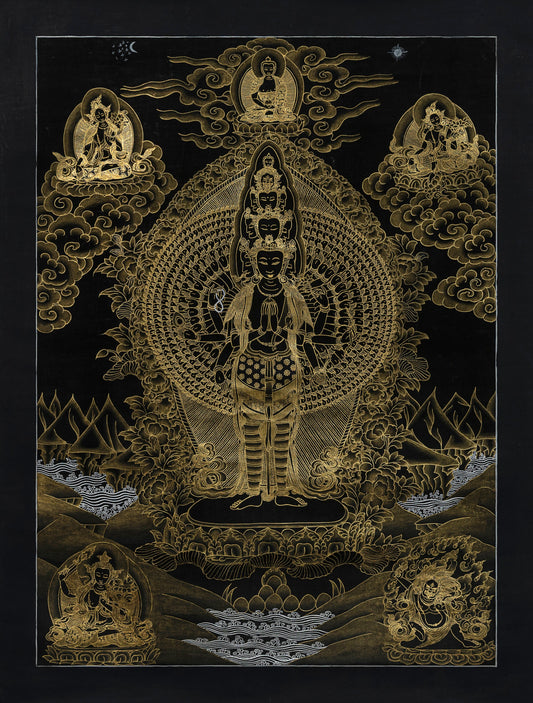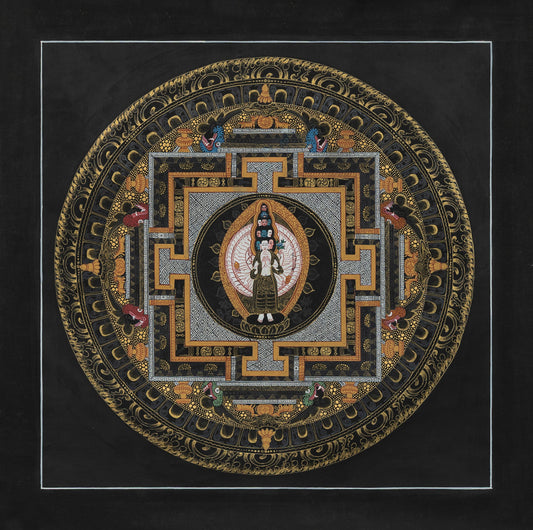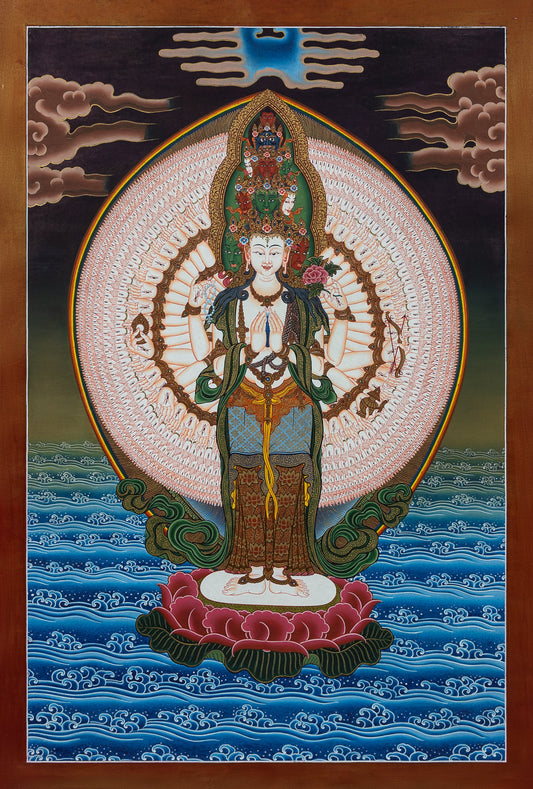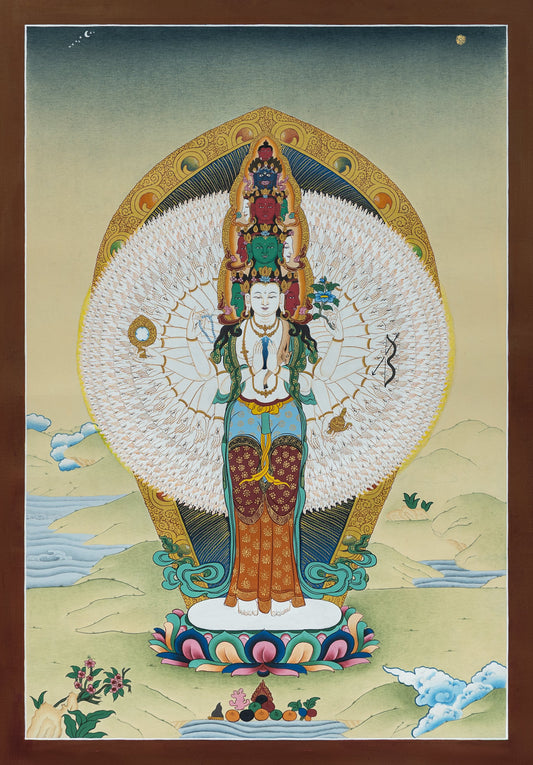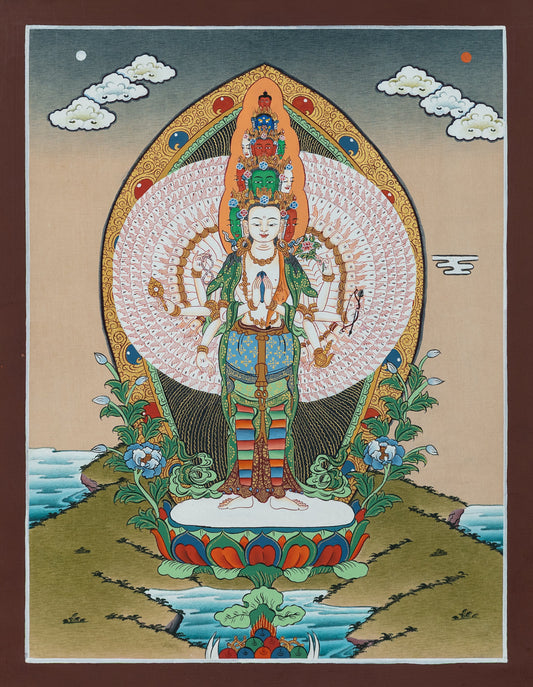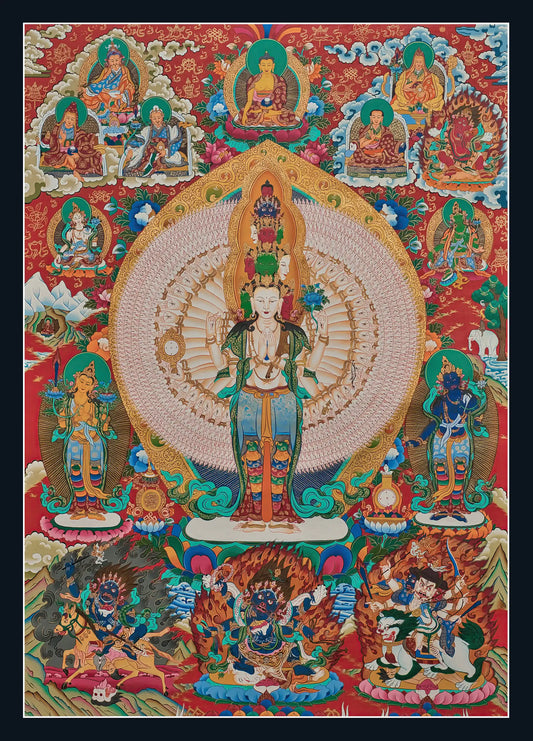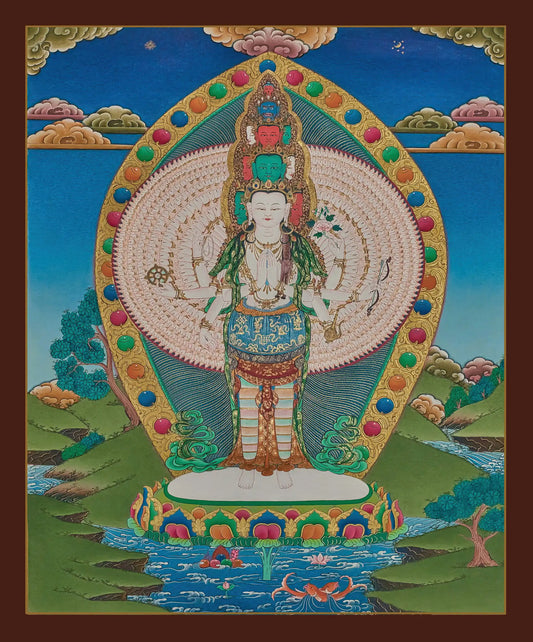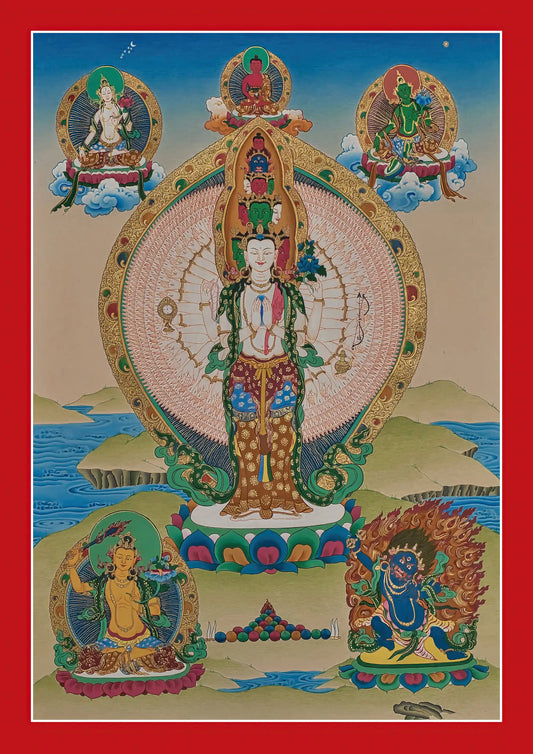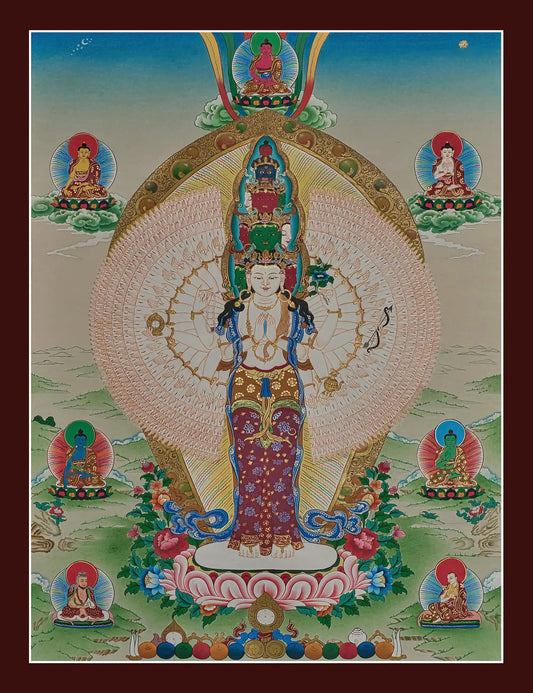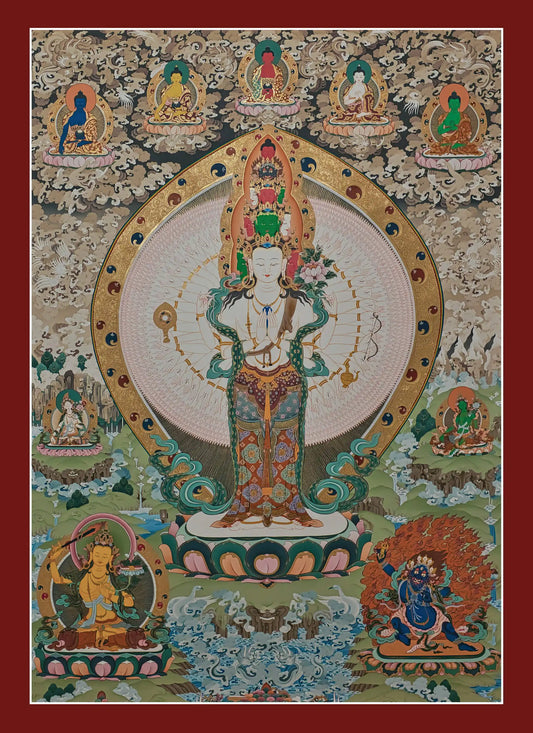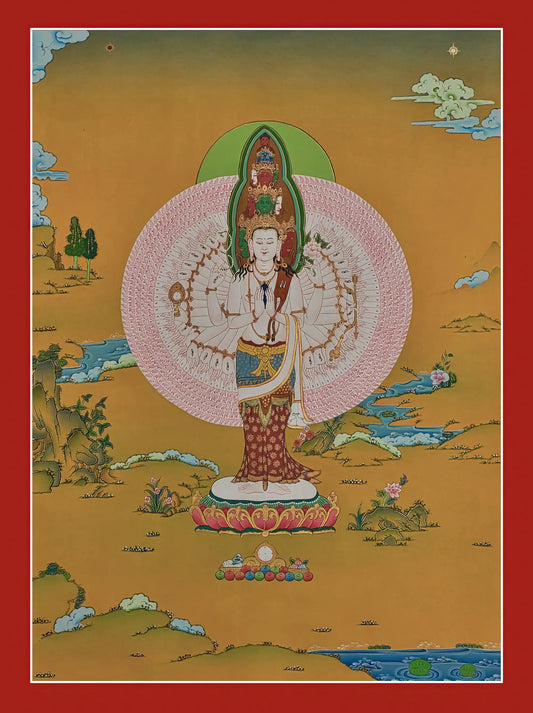Collection: Avalokiteshvara Thangka
Avalokiteshvara is a highly honored Bodhisattva of compassion. He embodies the boundless love and mercy that the Buddha taught. He vows to guide all beings toward liberation.
-
Avalokiteshvora Thangka - (14" * 19")
Regular price $181.00 USDRegular priceUnit price / per$201.00 USDSale price $181.00 USDSale -
Avalokiteshwora Mandala Thangka - (10" * 10")
Regular price $130.00 USDRegular priceUnit price / per$145.00 USDSale price $130.00 USDSale -
Avalokiteshvara Thangka - (16" * 24")
Regular price $310.00 USDRegular priceUnit price / per$344.00 USDSale price $310.00 USDSale -
Avalokiteshvara Thangka - (15" * 24")
Regular price $295.00 USDRegular priceUnit price / per$328.00 USDSale price $295.00 USDSale -
Avalokiteshvara Thangka - (11" * 14")
Regular price $194.00 USDRegular priceUnit price / per$216.00 USDSale price $194.00 USDSold out -
Avalokiteshvara Thangka | Peaceful, Wrathful, and Protectors Deities
Regular price $2,135.00 USDRegular priceUnit price / per$2,349.00 USDSale price $2,135.00 USDSale -
Avalokiteshvara Thangka / Chenrezig Thangka
Regular price $510.00 USDRegular priceUnit price / per$561.00 USDSale price $510.00 USDSale -
Avalokiteshvara Thangka / Chenrezig Thangka | Bodhisattvas, Deity, and Amitabha Buddha
Regular price $685.00 USDRegular priceUnit price / per$754.00 USDSale price $685.00 USDSale -
Avalokiteshvara Thangka (1000 Arms) | 5 Dhyani Buddhas
Regular price $1,060.00 USDRegular priceUnit price / per$1,166.00 USDSale price $1,060.00 USDSale -
Avalokiteshvara Thangka | Five Dhyani Buddhas | Other Deities
Regular price $7,649.00 USDRegular priceUnit price / per$8,414.00 USDSale price $7,649.00 USDSale -
Avalokiteshvara Thangka / Chenrezig Thangka
Regular price $800.00 USDRegular priceUnit price / per$880.00 USDSale price $800.00 USDSale
His mantra “Om Mani Padme Hum” is one of the most powerful mantras in Buddhism. Reciting it cultivates inner peace, kindness, and compassion in daily life.
Avalokiteshvara is revered for his ability to relieve suffering and offer comfort in times of pain. Avalokiteshvara appears with a thousand arms and eyes, representing his ability to help all beings.
FAQs for Avalokiteshvara Thangka
1. What does “Om Mani Padme Hum” mean?
It is the mantra symbolizing the jewel of compassion in the lotus of wisdom. Guiding practitioners toward enlightenment.
2. How does Avalokiteshvara help in daily life?
Through prayer and visualization, he helps reduce suffering, calm the mind, and foster loving-kindness.
3. How do I start Avalokiteshvara practice?
Simply chant his mantra daily with a sincere heart or meditate on his compassionate form.
4. Is Chenrezig and Avalokiteshvara the same?
Yes, Chenrezig and Avalokiteshvara are the same figure. Avalokiteshvara is the original Sanskrit name whereas Chenrezig is the Tibetan name for this Bodhisattva.
Explore Other Thangka Categories
-
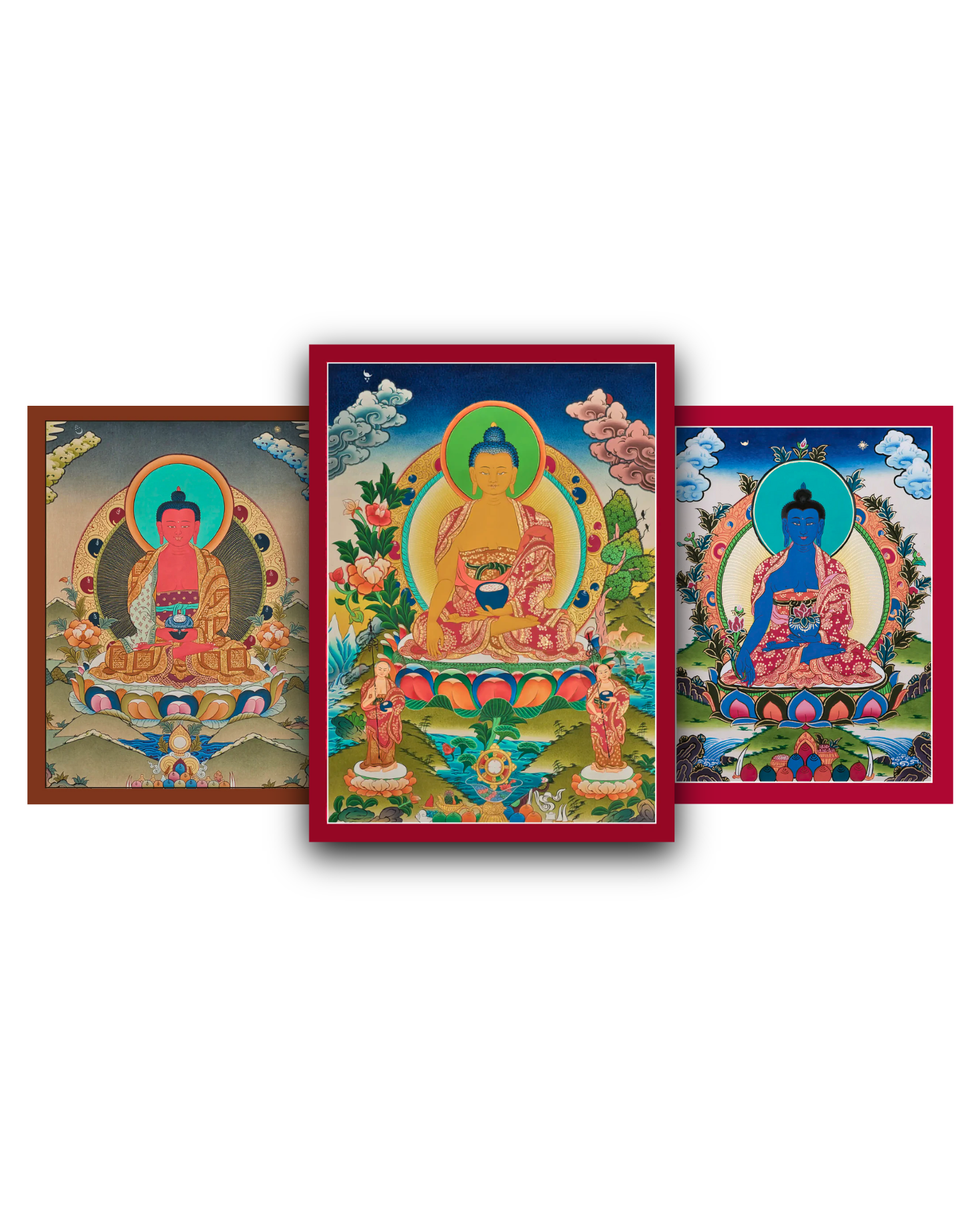
Buddha Thangka Paintings Collection
Welcome to our Buddha Thangka Paintings Collection, where sacred art meets timeless...
-
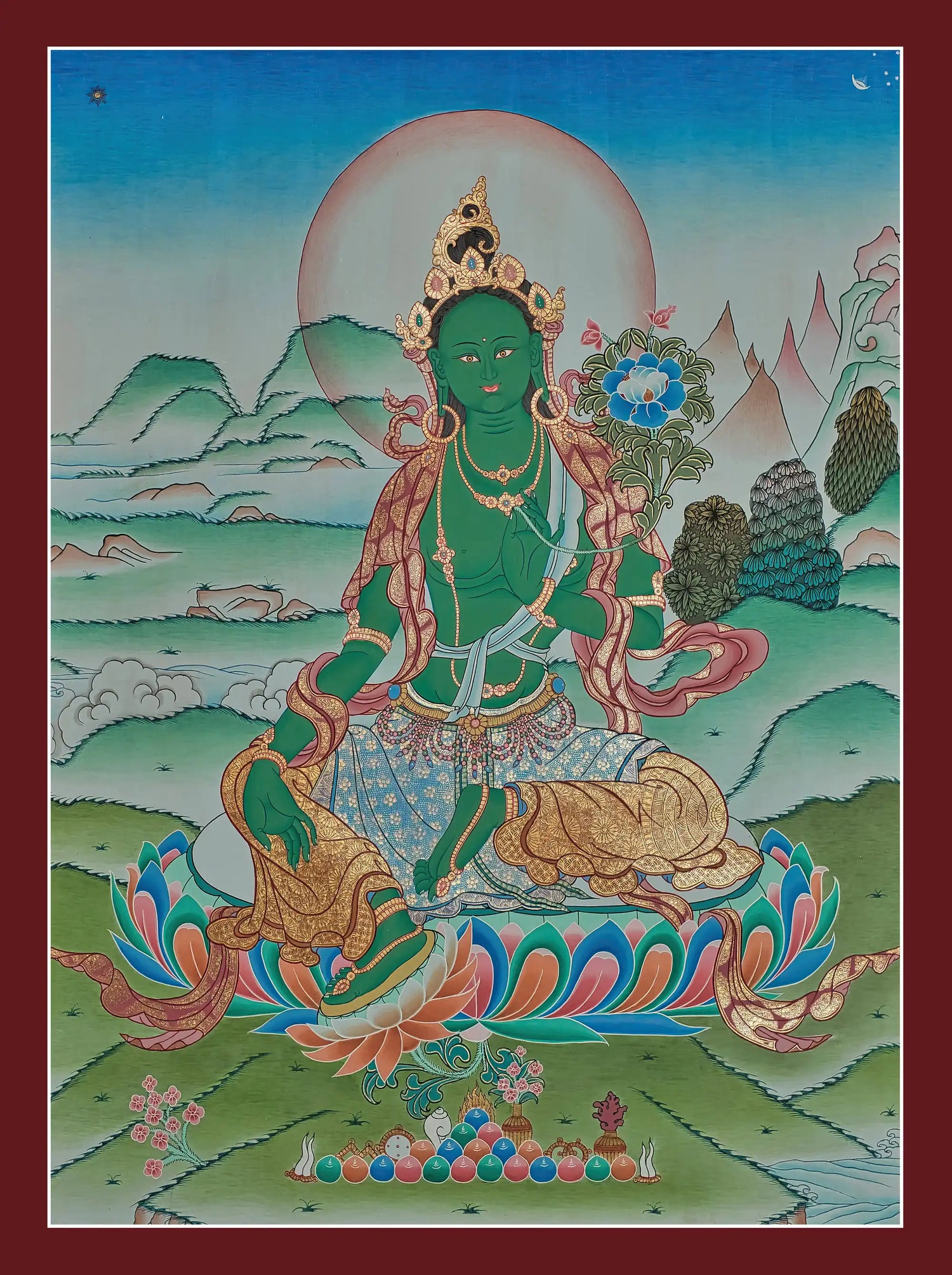
Bodhisattva Thangkas and Paintings
Bodhisattva thangkas and paintings bring the presence of enlightened beings into your...
-
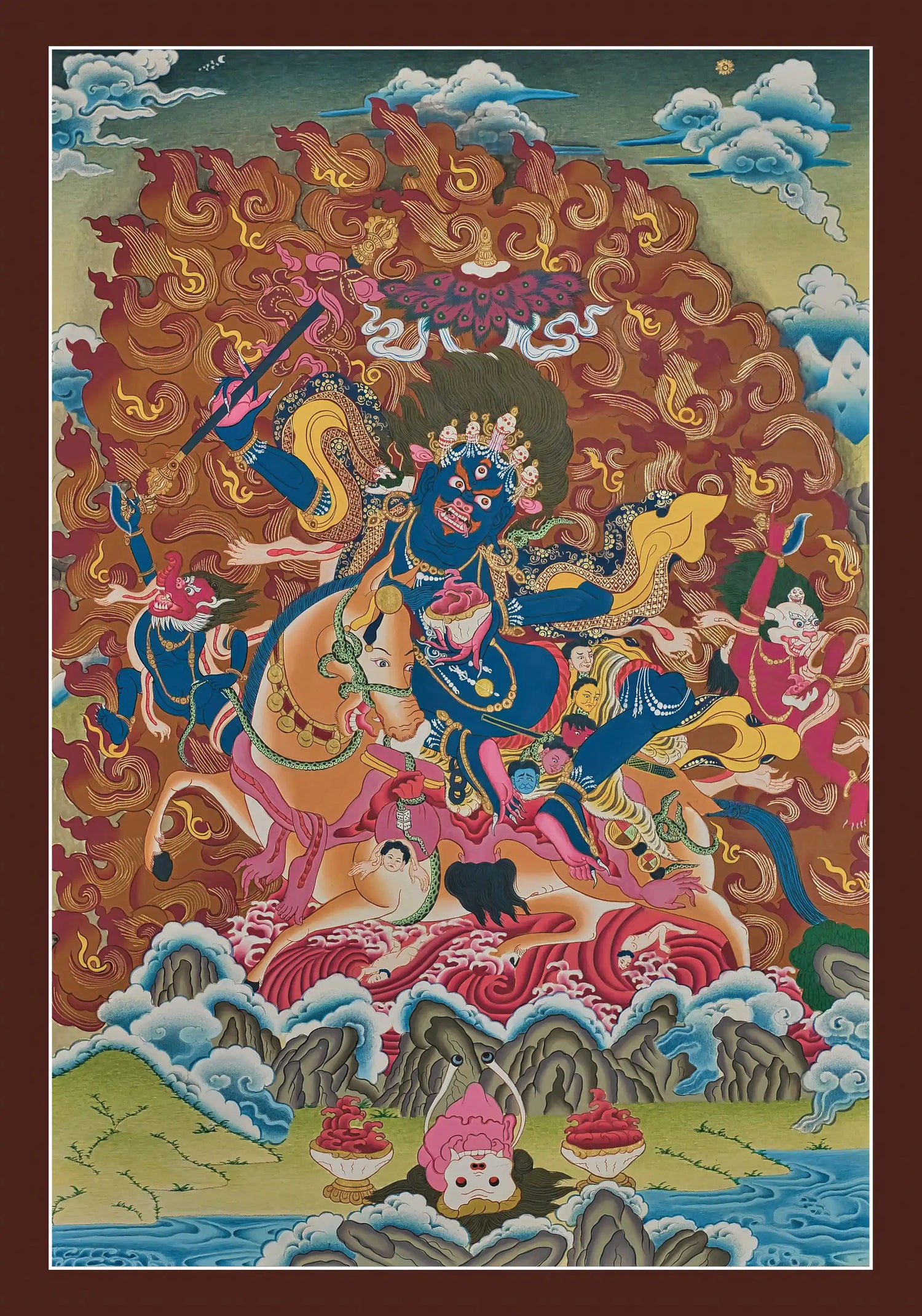
Buddhism Deities Thangkas
A Deity Thangkas are more than just art—they show powerful figures from buddhist...
-
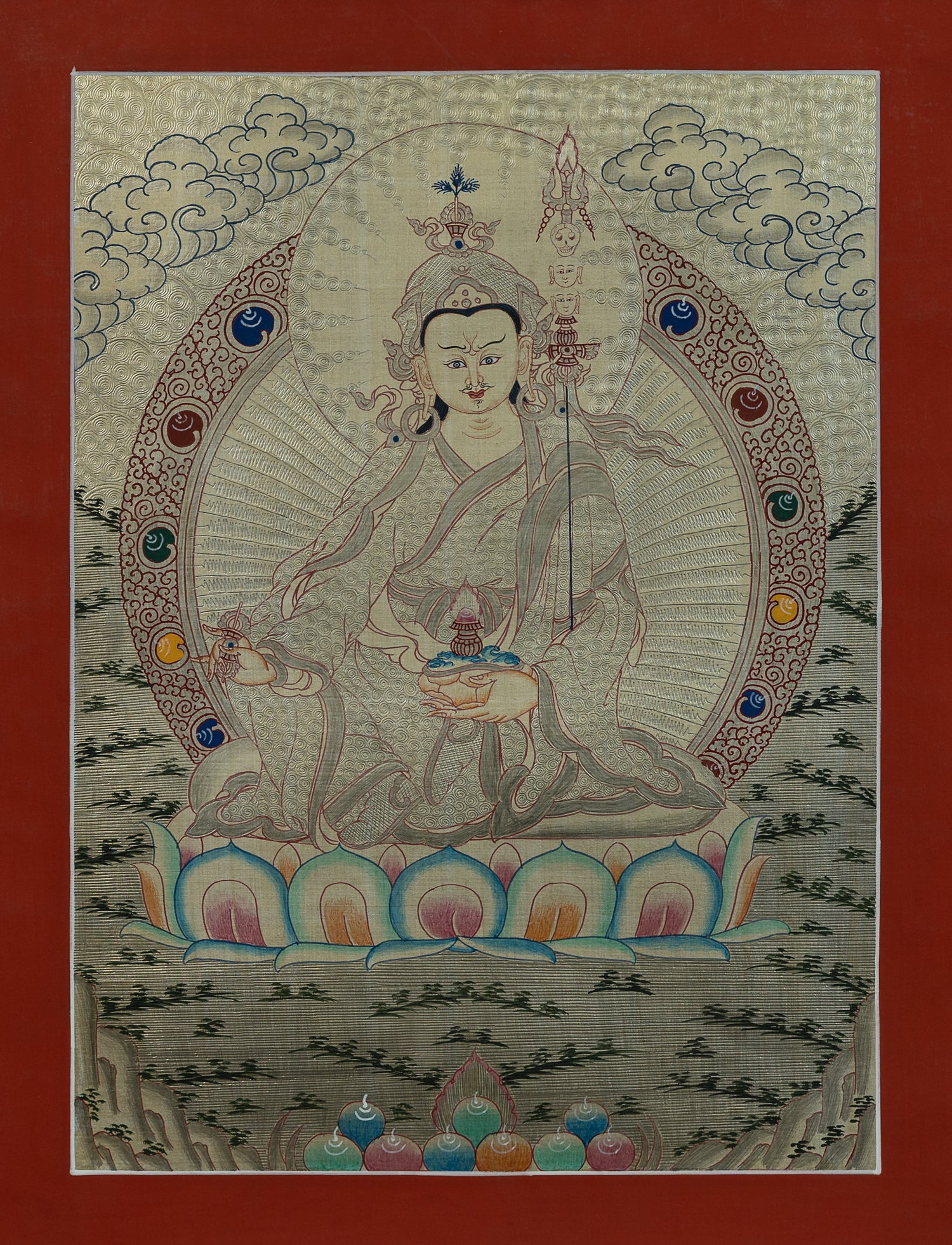
Guru Rinpoche Thangkas
Guru Rinpoche, or Padmasambava, is the revered "Buddha" who introduced Vajrayana teachings...
-
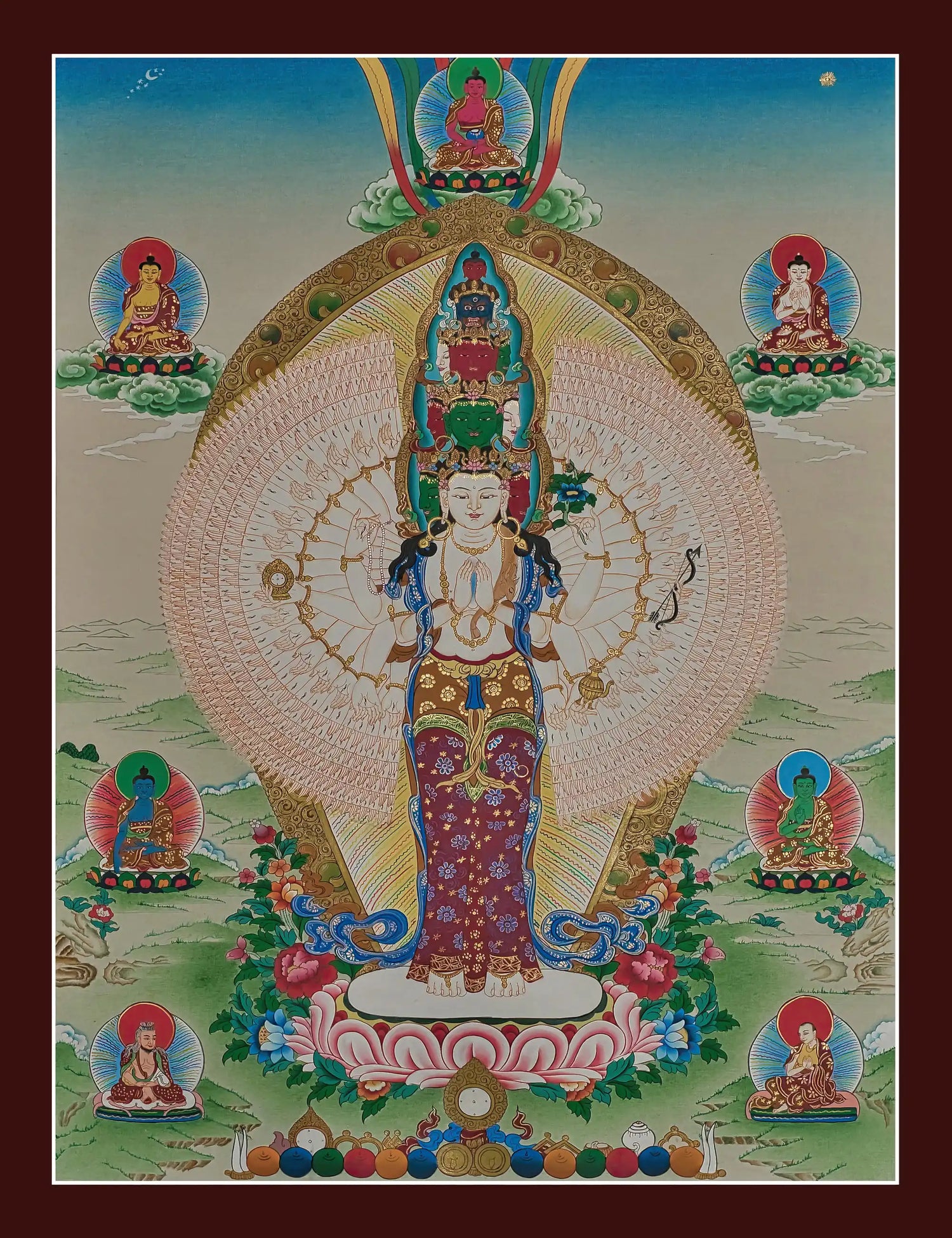
Exclusive Thangkas Collection
Exclusive Thangkas Collection
-
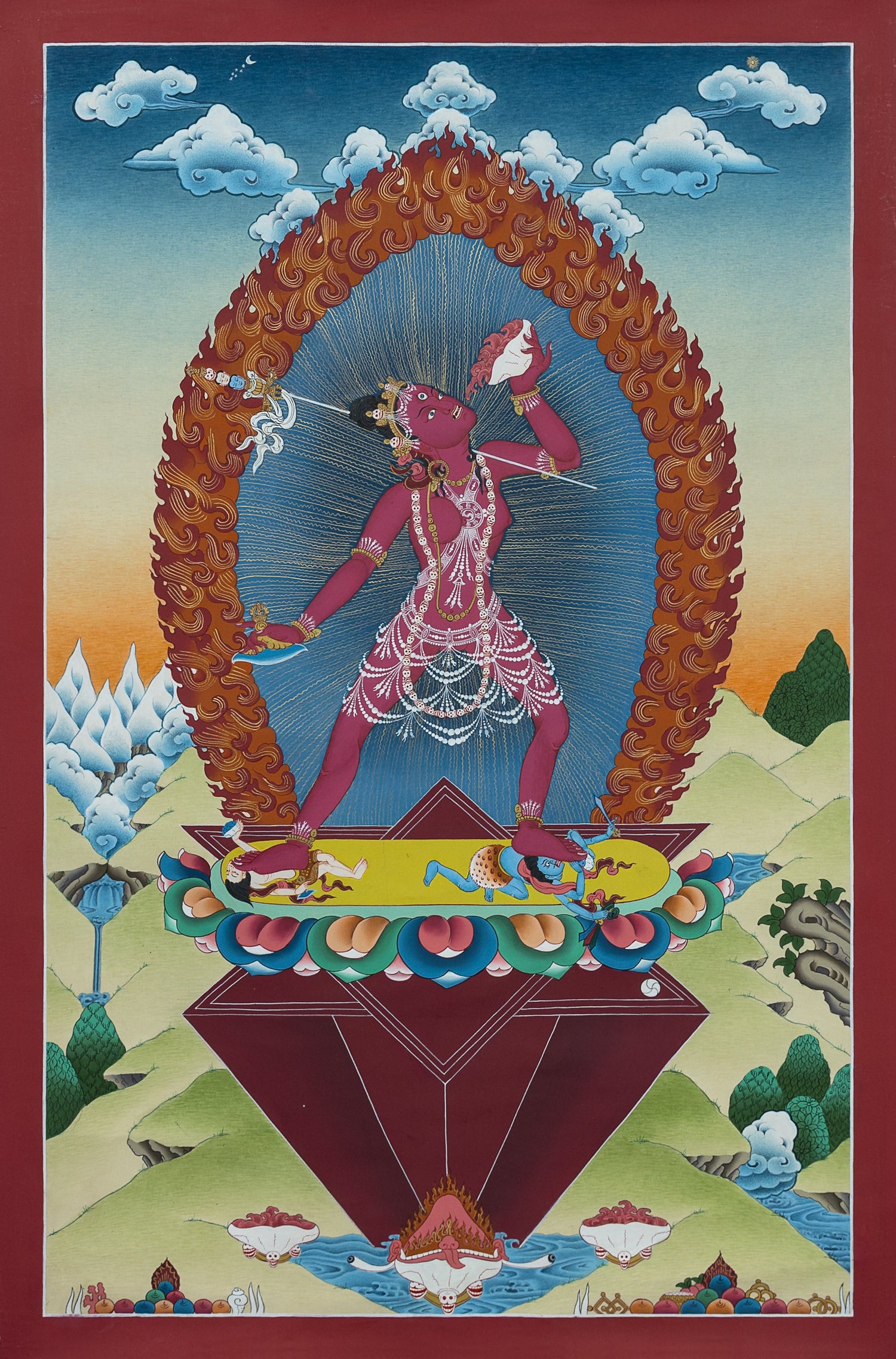
Dakinis and Yoginis
These beautiful thangkas celebrates the sacred energy of Dakinis and Yoginis, feminine...

